Title: National Geographic Kids National Park Guides U.S.A Written by: Sarah Wassener Flynn and Julie Beer Published by: National Geographic Kids, 2016 Themes: national parks in the USA, sights, activities, trips, conservation Ages: 7- adult Opening: In the last hundred years, life in the Unites States has changed a lot, … Continue reading
Add a CommentViewing: Blog Posts Tagged with: Trees, Most Recent at Top [Help]
Results 1 - 25 of 146
Blog: Miss Marple's Musings (Login to Add to MyJacketFlap)
JacketFlap tags: children's books, trees, National Parks, conservation, National geographic Kids, teaching resources, photogarphy, Perfect Picture Book Friday, Earth Day 2016, National Parks Centennial edition, Add a tag
Blog: OUPblog (Login to Add to MyJacketFlap)
JacketFlap tags: Journals, environment, trees, conservation, recycling, Earth Day, environmental protection, Forests, earth sciences, *Featured, oxford journals, Science & Medicine, Earth day network, Earth & Life Sciences, conservation projects, earth day 2016, Katy Roberts, save our tree, sustainable environment, Add a tag
Earth Day is an annual celebration, championed by the Earth Day Network, which focuses on promoting environmental protection around the world. The Earth Day Network’s mission is to build a healthy, sustainable environment, address climate change, and protect the Earth for future generations. The theme for Earth Day 2016 is Trees for the Earth, raising awareness around protecting the Earth’s forests.
The post Protecting the Earth for future generations appeared first on OUPblog.
Blog: drawboy's cigar box (Login to Add to MyJacketFlap)
JacketFlap tags: fairy tale, wolf, illustration friday, wood, trees, red riding hood, Patrick Girouard, Drawboy, Add a tag
Blog: Miss Marple's Musings (Login to Add to MyJacketFlap)
JacketFlap tags: ecology, San Diego, tree planting, biography picture book, California history, Perfect Picture Book Friday, Kate Sessions, The Tree Lady, following one's dreams, San Diego history, biography, Women's History Month, trees, Add a tag
I had another book scheduled for today, but as I am staying with one of my writing buddies and she introduced me to a delightful biography of a tree-loving woman here in San Diego, I couldn’t pass up the chance … Continue reading
Add a CommentBlog: the dust of everyday life (Login to Add to MyJacketFlap)
JacketFlap tags: Non-Fiction, Animals, bunny, trees, Gouache, THEMED ART, Joanne Friar, Charlesbridge Publishing, Add a tag
Blog: travel and sing (Login to Add to MyJacketFlap)
JacketFlap tags: books, love, songs, projects, trees, pigeons, Add a tag
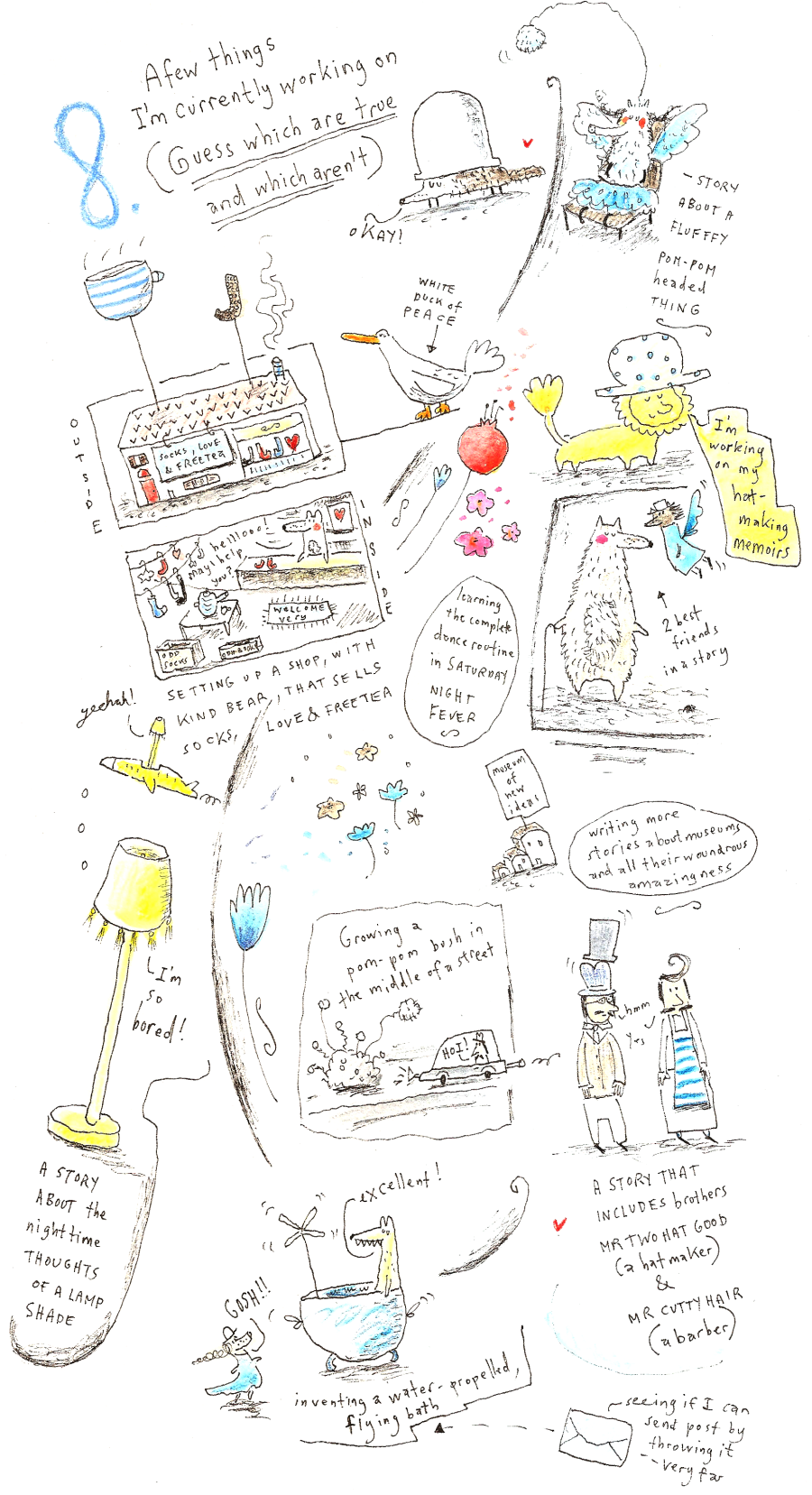
Filed under: pigeons, songs, trees
Blog: the enchanted easel (Login to Add to MyJacketFlap)
JacketFlap tags: disney, painting, etsy, trees, sale, kawaii, print, snow white, the enchanted easel, wishful companions, december discount days, fairest of them all, whimislca, love, birds, princess, Add a tag
Blog: Playing by the book (Login to Add to MyJacketFlap)
JacketFlap tags: Aina Bestard, Nature, Colours, Glasses, Trees, Add a tag
 What’s Hidden in the Woods by Aina Bestard (@ainab) is a playful, curiosity-creating picture book with a difference.
What’s Hidden in the Woods by Aina Bestard (@ainab) is a playful, curiosity-creating picture book with a difference.
At first glance, it’s a simple walk through the woods, but as you slow down and look closely, using a set of special lenses which come packaged with the book, all sorts of hidden stories are revealed. Animals and plants magically appear where there were none before. Gentle prompts on each page draw in readers / listeners / viewers to look again and let themselves be surprised and enchanted by the magic.
Bestard’s illustrative technique makes use of the fact that different coloured lenses filter out different colours printed on the page, disguising some, allowing others to suddenly appear clearly. This approach makes for stylish images also when viewed without any lenses; her limited palette, her highly decorative use of patterns and the clarity of her line all add up to fresh and eye-catching illustrations.


The experience of reading the book is also very interesting. It becomes something slower and more deliberate, not a race to the end, but rather an invitation to look, and look and look again. Such close observation is sometimes hard to encourage, but here it comes naturally and is hugely enjoyable. My kids both kept checking that they’d not missed any small detail and were truly fascinated by how something so simple as the lenses changed everything.

We just had to explore the technique used by Bestard ourselves and so we set up a creation station, with lots of different shades of red, yellow, blue and green markers, plus homemade acetate visors in each of the colours. The visors (made from acetate sheets rather than cellophane because acetate is a bit thicker and sturdier) meant that the kids could put them on and draw hands-free (so to say) i.e. without having to hold the magic lenses from the book in one hand.


There was a real frisson of excitement in the air as we saw how our drawings appeared to reveal hidden secrets as we viewed them through different coloured filters. I’ve tried to show how it looked to us by making this short animation:
Whilst making our own magic images we listened to:
Other activities which might work well alongside reading What’s Hidden in the Woods include:
Once you’ve enjoyed What’s Hidden in the Woods I’d recommend you look out for The Great Journey by Agathe Demois (which makes use of the same technique), and also for the books published by PatrickGeorge. The latter make very clever use of coloured acetate but in a completely different way to Bestard.
If you liked this post you might like these other posts by me:

If you’d like to receive all my posts from this blog please sign up by inputting your email address in the box below:
Delivered by FeedBurner
Disclosure: I was sent a free review copy of this book by the publisher.
Blog: Playing by the book (Login to Add to MyJacketFlap)
JacketFlap tags: Seasons, Nature, Trees, Britta Teckentrup, Patricia Hegarty, Add a tag
 Wise old owl who lives in this tree has seen it all before, but in fact there’s something reassuring about his experiences. Seasons come and seasons go, but life continues. And it’s a beautiful life, one to take time to savour.
Wise old owl who lives in this tree has seen it all before, but in fact there’s something reassuring about his experiences. Seasons come and seasons go, but life continues. And it’s a beautiful life, one to take time to savour.
Tree by Britta Teckentrup (@BTeckentrup) explores the life of a tree across the span of a single year, watching changes in leaves, blossom, fruit and the landscape around. Teckentrup celebrates the seasons with eye-catching beauty and soothingly rhythmic, lullaby-like text, reminding me of Walt Whitman’s tree which “utter[s] joyous leaves“.
We witness the circle of life not just on the tree, but also with the animals who visit; look out for the birds who build a nest and see what happens! What makes this book about seasonal changes stand out is its beauty, attention to detail, and lovely, quiet text which works very well for reading aloud. The physical book is incredibly inviting – from the textured hardback cover, to the satisfyingly thick pages, and most delightful of all – the peep-through holes, which page-turn by page-turn reveal and then conceal visiting animals.
The illustrations look like relief printing, with a handmade texture and matt finish that perfectly reflects a delight in nature and “the natural”. Jubilant use of colour lights up every page.

Interestingly, the text for this picture book was actually written by Patricia Hegarty, but her name doesn’t appear on the book cover or title page inside. I imagine this is because the book is really a vehicle to let Teckentrup’s illustrations sing – which they do in all their glory – but it’s an interesting detail given the current debate about equal recognition for authors and illustrators reflected by the Pictures Mean Business campaign. Do you know of any other picture books where the author doesn’t get the same credit as the illustrator?

Sumptuous, strokable and always in season, Tree tells a timeless tale to delight all.

Inspired by Teckentrup’s artwork, we set about creating our own colourful trees. First we stencilled a trunk…

…before adding tissue paper leaves in a variety of colours.

When dry, we cut out our trees to include their canopy, added a few hand-drawn animals, and put them up somewhere a little bit unusual – by our skirting board – so that other woodland creatures could come and play.




Whilst creating our trees we listened to:
Other activities which might work well alongside reading Tree include:
If you liked this post you might like these other posts by me:

If you’d like to receive all my posts from this blog please sign up by inputting your email address in the box below:
Delivered by FeedBurner
Disclosure: I was sent a free review copy of this book by the publisher.
Blog: Inkygirl: Daily Diversions For Writers (Login to Add to MyJacketFlap)
JacketFlap tags: trees, Comics for writers, ipad, books, Add a tag
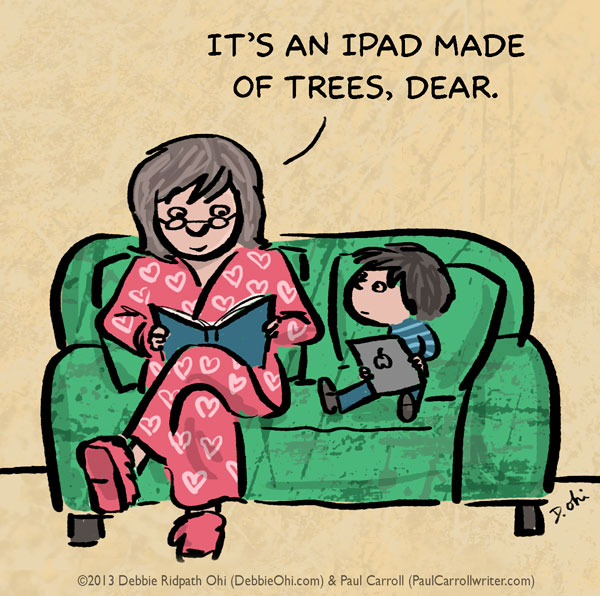
Thanks to Goodreads for tweeting the comic I did with Paul Carroll today!
Blog: The Children's Book Review (Login to Add to MyJacketFlap)
JacketFlap tags: Ages 4-8, Ages 9-12, Picture Books, Nature, Current Affairs, Trees, Author Showcase, Environment & Ecology, J. Steven Spires, Jonathan Caron, Booka About Natural Disasters, Hurricane Books, Add a tag
In The Oak Tree, written by J. Steven Spires and illustrated by Jonathan Caron, the reader is given the opportunity to revisit the devastation wrought by Hurricanes Katrina and Rita on the Gulf Coast 10 years ago.
Add a CommentBlog: PW -The Beat (Login to Add to MyJacketFlap)
JacketFlap tags: Interviews, Comics, Image, Trees, Warren Ellis, Top News, Top Comics, Jason Howard, Add a tag
Jason Howard is a prolific illustrator whose work has been featured in a number of hugely popular titles such as Superior Spider-Man and Invincible. He’s currently the series artist on Trees, collaborating with writer Warren Ellis to tell a uniquely human science fiction story.
When a group of monolithic alien towers, colloquially referred to as Trees, touch down around the world, people prepare for war. To their surprise, nothing ever emerges from these Trees, and humanity is forced to reconcile with the idea that their existence is not even worth the aliens’ time. Through this premise, Ellis and Howard tell the affecting stories of people who are forced to alter their lives in the face of their own smallness.
In the run up to issue 10 of Trees, which releases on June 17th, I took a moment to speak to Howard about his working process and favorite moments throughout the series thus far.
Alex Lu: So currently, we’re up to issue 9 of Trees. How long do you see the series running for?
Jason Howard: We thought the series would go somewhere between 13 and 23 issues. It’s one of the stories that has a lot of threads, so we’ll keep it going for a while. Personally, I’d like to get at least three trades out, since all my prior series had at least three trades. Things are going well, so I’d like to keep things rolling.
Lu: I remember an end date being set, is that no longer the case?
Howard: I don’t recall…maybe Warren said something, but we never had a firm end date and the story was always a little wander-y, so we might go down some of those stray threads if Warren has ideas for them.
Lu: How did you come to work with Warren on Trees?
Howard: We did a webcomic together called Scatterlands, and while I was working on Super Dinosaur it was a fun side project to do. Later on, Warren was getting pretty busy with TV stuff and I was nearing the end of my Super Dinosaur run and I was looking for something else to fill my time so I contacted Warren and this is where we ended up.
Lu: What’s your collaborative process with Warren like? Does he like to direct you with firm scripts or give you a wider berth to explore and wander on your own?
Howard: He writes a full script. At the beginning of Trees, we talked a lot about the nature of the series and the different ways we were going to touch on the themes of the title. From there, it’s been a pretty normal collaborative process. I get a script from him and then I start drawing it and do the script justice.
Lu: The art of Trees is quite soft despite the series’ grim tone. How did you nail the art style and how do you design the color palettes for the series?
Howard: I’m always trying different things with the colors. I like mood coloring where you get a sense of place and time. Depending on what’s happening in the scene, I want the colors to play with that or play against it.
With the linework and inking, I’m going for something scratchy, broken, and dirty. It expresses the tone of the world and that the earth isn’t quite right anymore.
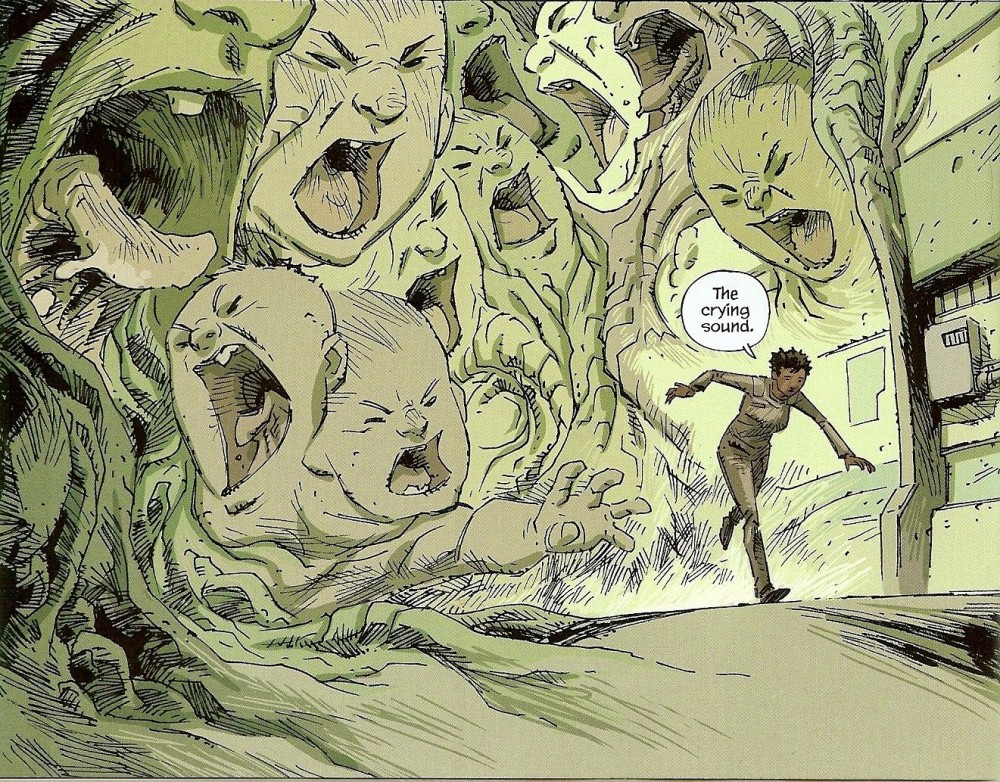 What’s been your favorite thing to draw in the series?
What’s been your favorite thing to draw in the series?
Howard: I love drawing snow…or not drawing it depending on the situation. The snow scenes are definitely some of my favorites. There are some pages in issue 11, which aren’t out yet, that are some of the most fun I’ve had on the series so far. One of the storylines in the second arc takes place in New York City and we touched on a couple of characters in volume one that we’ll be spending some more time with there. That post-tree New York City is really fun, and I love drawing environment and world stuff in general.
It’s been fun because Ellis is placing the story in actual locations or places extrapolated from actual locations, so I get to spend time looking for cool references. There’s a part of the first arc that takes place in a town in Italy, so I got to look at all the pictures on the internet, people’s vacations photos in Italy, stuff like that. It gives you a real sense of place in the story.
Lu: What kind of references did you use for the scenes set in China?
Howard: I pulled a lot of different stuff because Warren envisioned that city as a sort of artistic community. There’s an oppressive government in our China, but they let this flower bloom. I looked at a lot of photos of Chinese cities and photos of different kinds of art communities. I mashed them together and this is what we ended up with.
That stuff was kind of hard because sometimes the schedule of monthly comics means you just have to get pages done. Meanwhile, the designer in me would have loved to have spent a month just really sinking into the various elements of the city, but, well, I just have to draw those pages.
Sometimes I feel like I’m really successful, but other times I want another shot at it because I think I’ve come up with some better ideas. Ultimately, that setting was complex for me so that’s one of the things that I’d like another crack at just to have the opportunity to push my ideas a little bit farther.
Lu: Personally, I feel like those scenes were some of the most fully realized in the series. The way that ChengLei’s scenes were framed really encapsulates some of the overarching themes of the book. As an artist, he more than most realizes how small the human race is in the face of these trees, so he decides to live life the way he wants to and experience everything he can.
Howard: I liked the scene in the art studio they found…that was really fun. I found lots of old warehouses for reference and tried to artsy them up. I thought that that storyline was one of the ones in the first arc that really hit home for me. I got some of the scripts from Warren and told him, “Oh, you’re really breaking my heart.”
Lu: Are you clued in to the greater scope of the story? Do you have full knowledge of what the trees are and what they do?
I know what our intial talks were. I don’t know where Warren has gone with it creatively since then. Trees is ultimately more about the characters surrounding the trees than the trees themselves. What would a normal person like us do after a big world event like the landing of the trees.
You know, something might be happening overseas or in Washington D.C. and we might be aware of it and how it affects us, but we don’t really know all the details. We’re worried about what’s happening today with this girl we like or this job situation. I think Warren is trying to focus on the stories of the individual characters as they’re affected by the trees. We’re getting hints of the greater scope along the way that hopefully start to paint a big picture in someone’s mind.
Ultimately though, I don’t think there’s ever going to be a big action team that goes and attacks the trees to kill the aliens.
Lu: I hope not! That’d go against the whole tone of the series so far.
Howard: Maybe that’ll be the last volume. It’ll just be a huge shift in tone and become a dumb 80s action movie to wrap it all up.
Lu: Well, that’s actually what The Wake did, though!
Howard: That book was crazy! It was super entertaining, but it started off as horror and suddenly became a totally different post-apocalyptic story. It felt like he was intentionally using genre tropes from horror and sci-fi to tell different parts of the story, so it was really cool, but reading it was pretty jarring!
Lu: Did you like the shift, though?
Howard: Yeah, I liked it in the story. I don’t know if I’d like everything like that, but I think [Snyder] pulled it off pretty well and it was gutsy move to suddenly say “Alright, this part is done, but the story’s not done. We’re going to jump forward in time so we see the beginning of the big event and its end.”
Lu: Would you like to try something like that in a series?
Howard: I don’t know. As a creative person, I want to try out everything I see. I’ll read an auto-bio comic and want to do that, but then I’ll see an action movie and want to make something really dumb with big guns and cool visuals. Trees is a thoughtful book that has a slow-burning plot and a lot of environments, and that’s been a lot of fun, but on the other hand I also had fun doing Super Dinosaur. That series was something for my kids. Big cartoon in-your-face dinosaurs and robots. It’s as opposite in tone as you can get from Trees.
It’s all great, and ultimately, I just hope to get a chance to stretch all those creative impulses.
Blog: (Login to Add to MyJacketFlap)
JacketFlap tags: Books, Picture Books, Barbara Reid, trees, Scholastic Canada, Picture a Tree, MWD Reviews, MWD book reviews, MWD theme - Trees, children's books about trees, North Winds Press, Add a tag

Picture a Tree
by Barbara Reid
(North Winds Press, Scholastic Canada, 2011)
‘There is more than one way to picture a tree.’ So begins this … Continue reading ...
Blog: Miss Marple's Musings (Login to Add to MyJacketFlap)
JacketFlap tags: equality, bilingualism, call me tree, 2015 Diversity Reading Challenge, llamame arbor, Maria Christina Gonzalez, non-gender specific, diversity, nature, trees, yoga, hispanic, growth, Add a tag
Today’s book recommendation has a multiplicity of diversity in it – the book is bilingual and has a non-gender specific protagonist. Title: Call Me Tree – Llámame árbol Written and illustrated by: Maya Christina Gonzalez Published by: Children’s Book Press, an imprint of Lee … Continue reading
Add a CommentBlog: In the land of whimsy (Login to Add to MyJacketFlap)
JacketFlap tags: drive in movie, summer nights, art, trees, castles, Wiggle, chalk, lightning bugs, Add a tag
Well, when I was a kid we would drive to my grandparents house in Cleveland. It wasn't a long drive, although when you're 10 or 12 it felt longer than the actual half hour or so that it was. On one of these drives I decided to let my pencil wiggle about my paper on the drive home, just to amuse myself I guess. I remember just relaxing the pencil on the paper and letting the road do the drawing. It looked something like this
As I think about this word, and look over my art, it seems that my art is just filled with wiggles…
I have wiggly castles, and wiggly trees.
...and more wiggly trees, along with strange rooster creatures and wiggly haired cave women.
And here is one of my favorite wiggles, this cute little snake basking in the sun. I could go on and on with my wiggle art.
Doing fun kids art makes me happy. I go into a zone that I really like. It brings memories back of days that felt lighter and simpler. Days when you would play outside with friends until the street lights would come on. Days of chalk on sidewalk, or whirling finger paint onto large sheets of paper, just for the joy of how it felt and the colors it made. Warm summer nights filled with catching lightning bugs, or piling into a station wagon to go to the drive-in-movie.
...Or times when you did funny things, like holding your pencil to your paper for an entire car ride just because.
Blog: Sugar Frosted Goodness (Login to Add to MyJacketFlap)
JacketFlap tags: new year, holidays, metin seven, sevensheaven, landscape, trees, greetings, Xmas, mountains, seasons greetings, season, low poly, low polygon, Add a tag
Metinseven.com wishes you Happy Holidays and a pleasant 2015!
Blog: travel and sing (Login to Add to MyJacketFlap)
JacketFlap tags: poetry, love, autumn, inspiration, muse, stories, songs, trees, journeys, dances, Add a tag
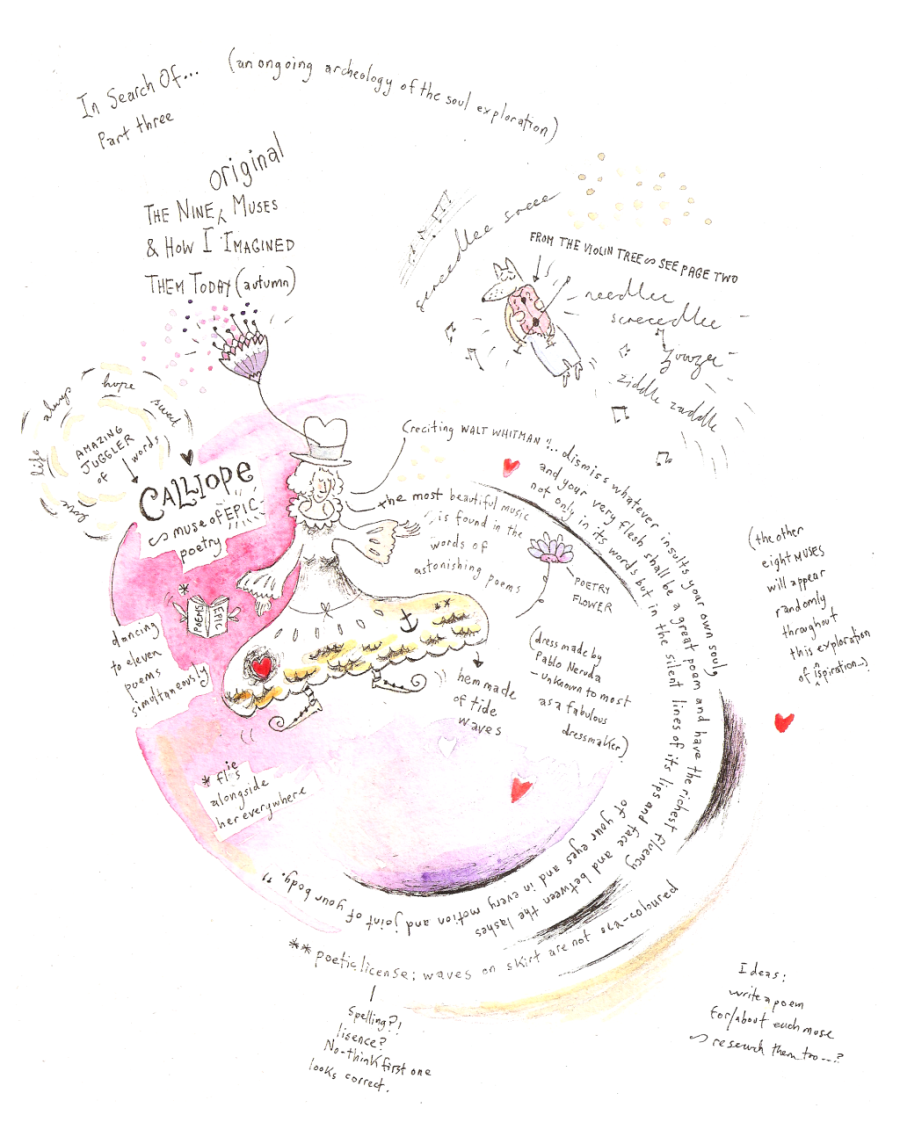
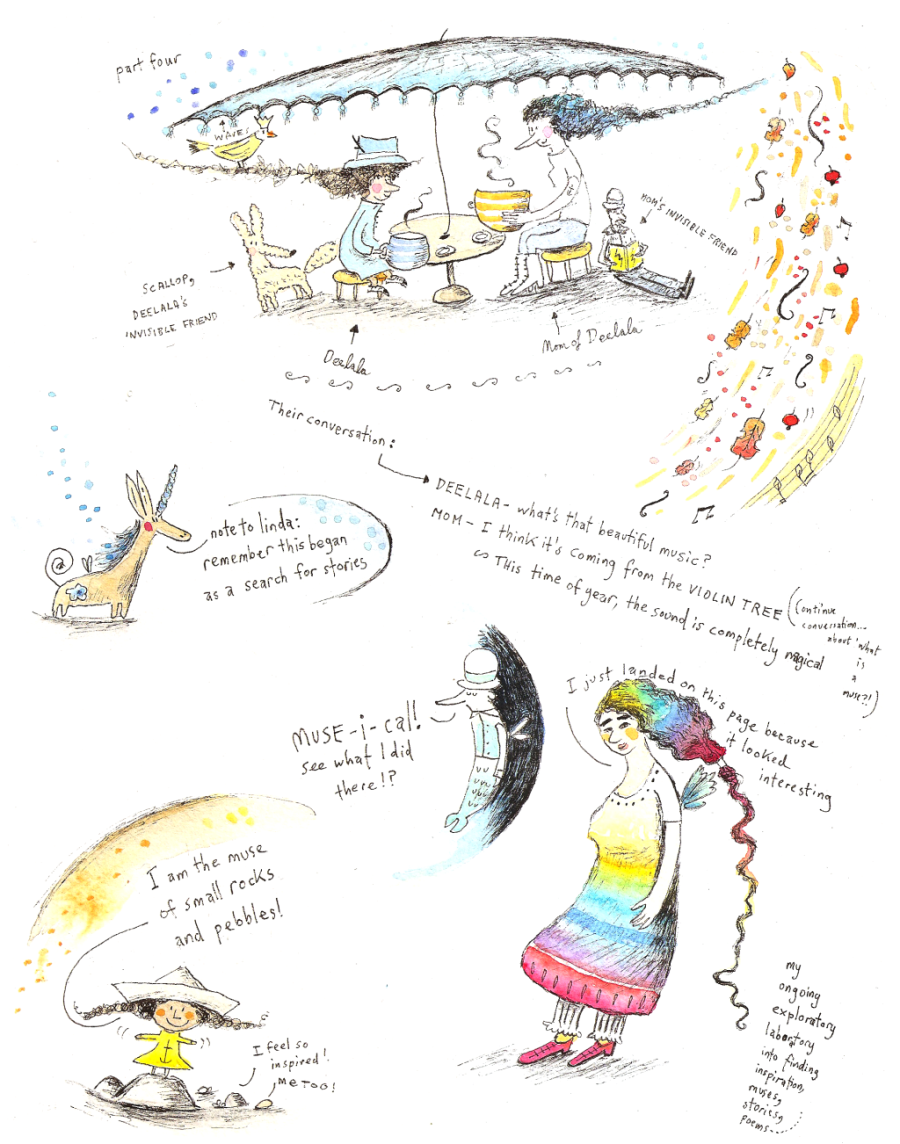
Filed under: autumn, dances, journeys, love, poetry, songs, trees
Blog: travel and sing (Login to Add to MyJacketFlap)
JacketFlap tags: inspiration, trees, giraffe, dances, one-tooth dog, doubts, Gabriel Alborozo, Add a tag
Recently, the brilliant, talented and inspiring artist and writer Gabriel Alborozo wrote some beautiful comments about my illustrated interview on the wonderful Zoe Toft’s blog ~ and Gabriel’s words lifted my spirit, my smile and my pencil and paints. I have loved Gabriel’s work for a long time ~ bold, sweet, funny, silly (a HUGE complement) and utterly brilliant. I wanted to say an illustrated thank you, so here it is:
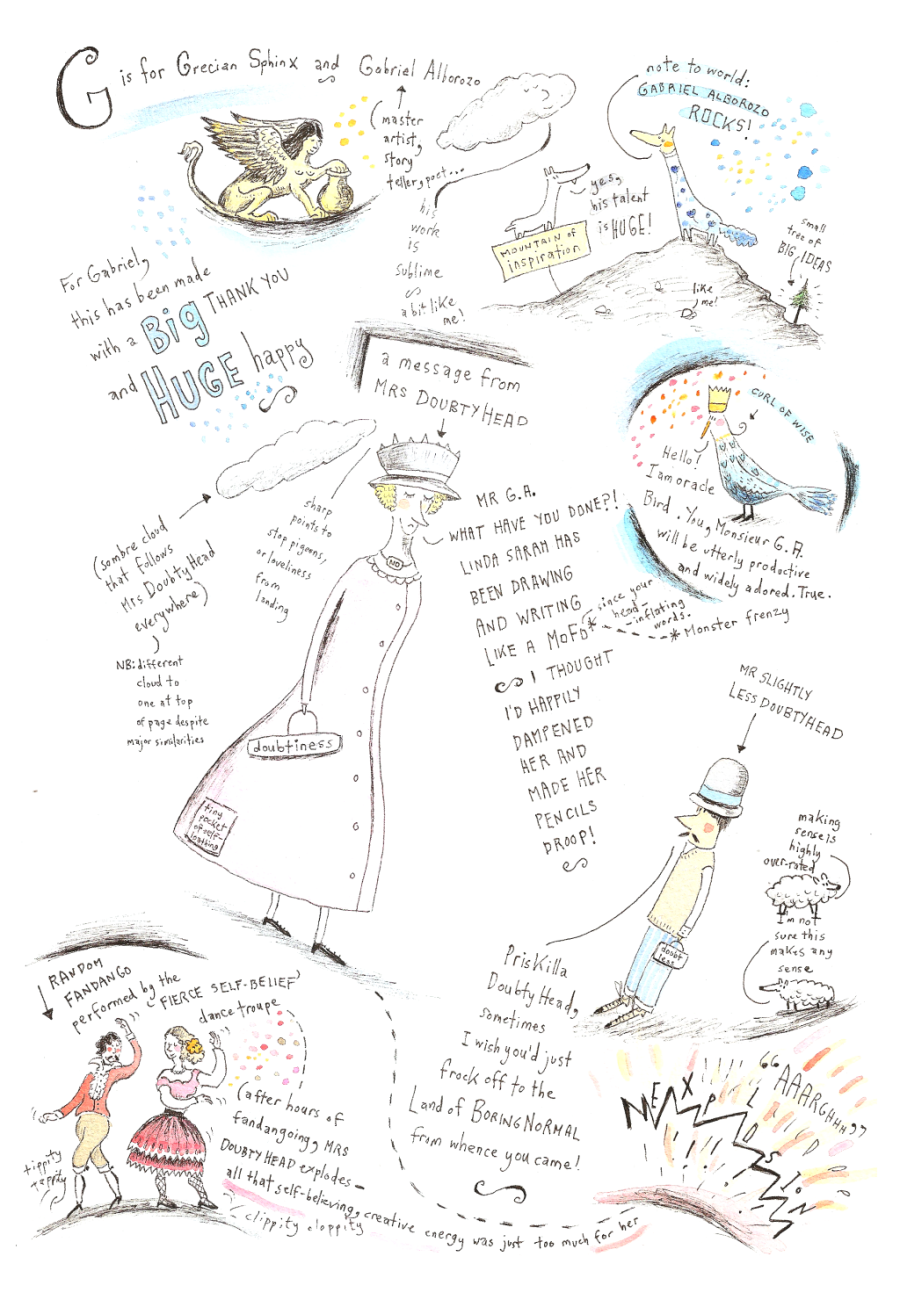
Filed under: dances, giraffe, one-tooth dog, trees
Blog: Miss Marple's Musings (Login to Add to MyJacketFlap)
JacketFlap tags: picture book, picture books, nature, trees, Book recommendation, sisters, teaching resources, making up, Perfect Picture Book Friday, Lori Nichols, actiivities, Maple & Willow Together, pig latin, sibling bond, Add a tag
Title: Maple & Willow Together Written and illustrated by: Lori Nichols Published by: Nancy Paulsen Books, Nov. 4th, 2014 Themes/Topics: sisters, sibling dynamics, making up Suitable for ages: 3-7 Fiction, 32 pages Opening: Maple and her little sister, Willow, were always together. … Continue reading
Add a CommentBlog: Beautifique (Login to Add to MyJacketFlap)
JacketFlap tags: Life & Stuff, beautifique studio, ninamata, beautifique blog, bellagio hotel, fall theme, nightscape, ninamataillustrations, roughsketches, watermill, vegas, autumn, Illustrations, sketches, trees, work in progress, pumpkin, view, Add a tag
 Worked on some fun sketches all week and I can’t wait to share the finals with you!
Worked on some fun sketches all week and I can’t wait to share the finals with you!
The hubby and I took a quick trip to Vegas last week. Although it was mostly a business trip rather than a pleasure trip, we managed to squeeze in a little bit of fun in between our chaotic schedules.
 I’ve never been to Vegas in the fall..I hadn’t realized how enchanting this place can be. If you get a chance to go this fall I highly recommend it. The weather seems great this time of the year.
I’ve never been to Vegas in the fall..I hadn’t realized how enchanting this place can be. If you get a chance to go this fall I highly recommend it. The weather seems great this time of the year.
This is pretty much what I saw all of last week..I’m not complaining!!
HAPPY MONDAY!
Add a CommentBlog: Miss Marple's Musings (Login to Add to MyJacketFlap)
JacketFlap tags: picture book, trees, Mary Newell DePalma, leaves, MAPLE, life cycle, teaching activities, Perfect Picture Book Friday, PPBF, A Grand Old Tree, Lori Nichole, Add a tag
Title: A Grand Old Tree Written and illustrated by: Mary Newell Published By: Arthur A. Levine Books, 2005 Themes/Topics: Trees, life cycle, ecology, seasons Suitable for ages: 3-7 Opening: … Continue reading
Add a CommentBlog: Fantastical Childrens Books (Login to Add to MyJacketFlap)
JacketFlap tags: nature, benefits, trees, conservation, save, shade, Nature's design, NatureConservancy, Add a tag
This is an article after my own heart. Check it out: “If Trees Could Sing” http://www.nature.org/ourinitiatives/regions/northamerica/unitedstates/tennessee/if-trees-could-sing/index.htm?src=e.gpFiled under: Nature's design Tagged: benefits, conservation, nature, NatureConservancy, save, shade, trees![]()
Blog: Sarah McIntyre (Login to Add to MyJacketFlap)
JacketFlap tags: portraits, trees, greenwich, Add a tag
Thanks so much to everyone who responded to my previous post, Fighting Back, about drawing and depression. I'm not very articulate with myself about my own state of mind, but I'm finding that I can sort of gauge how well I'm doing by my attitude to drawing. I've been doing some drawings this weekend that are a bit more realistic than my normal way of illustrating. Here's a pencil portrait of my neighbour, Susi: 
This particular bout of being depressed and struggling to draw fluently has shown me a few things about myself that I want to hash through so I don't forget them next time. (Which means this might sound very self-indulgent, but I'll write it anyway, because I need to. Perhaps some people will be able to relate.)
* I get jealous when I'm depressed.
When I can draw playfully and I'm in the swing of things, I love seeing amazing work by other artists, and I find it inspiring and encouraging. Seeing exploratory drawings by the likes of Jontofski, Ian McQue and Alex T. Smith makes me happy. But while I've been down, I haven't been exactly angry at other artists, but I could feel the first twinges of not being exactly thrilled at seeing other good drawings. And I knew that was wrong, and pulled myself back from believing my own feelings, but I could understand better where people were coming from when they said that good artists annoyed them. I had one friend actually tell me that when he sees a good piece of illustration, his first feeling is murderous rage, which only then subsides into appreciation. I tend to hear this more from guys than other women, but I got a little glimpse into that world. And I know that if I start feeling it again, I need to stop and take stock of my mental state before it get totally debilitating.
* I'm not really angry at other artists, I'm lonely.
I realised what it was that was making me angry; these people were throwing themselves into new techniques and developing new skills, and seeing their work made me felt left out. Instead of feeling boosted up by them, like marching with fellow soldiers, they were leaving me behind. It wasn't anger I was feeling at all, it was loneliness. I'd been reading J.G. Ballard's Empire of the Sun, and Patrick Ness's More Than This, both stories which begin with solitary kids foraging in abandoned neighbourhoods, and I could totally relate to them.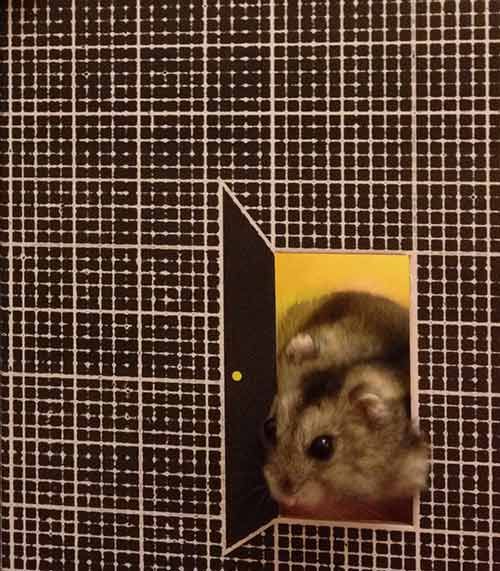
Solitary hamster foraging through 'More than This'
* Realistic drawing helps simplify things and can be therapeutic.
Whenever I do realistic drawing, I get more compliments on my artistry than when I do more simplified, stylised illustration work, particularly from non-illustrators. But drawing simplified pictures, in many ways, is more difficult and requires more skill and constant decision making. I'm having to pare things down to their essences and add my own playful interpretation. And when I'm tired and feeling low, this is much harder to do. Sketching realistically still requires some amount of interpretation, but I don't have to make major changes to what's in front of me, I can use it completely as a guide, and get lost in the object I'm looking at, instead of in my drawing. It's more a study in looking than drawing, letting my eyes follow each bulge and bump.
Here's a drawing I made in Greenwich Park this morning, of one of the old chestnut trees. I notice so many things about the tree that I could never take in at a brief glance, and it feels good to appreciate the details of the tree; I can lose myself in that. I guess that's why it's therapeutic; stylised illustrations feel more about me, whereas these sorts of sketches feel more about what I'm looking at. And I want to get out of 'me' for awhile. 
I wouldn't want to do this sort of drawing in a picture book, and I don't particularly like most picture books that have a sort of photo-realistic quality to them; I'd rather they be actual photos than tight, slavish copies of photos. I want to see people take things for a spin, not just show me their technical skill in copying. (Photo-realistic drawings of children laughing, in particular, make me cringe; they never look entirely natural.) Photo-realism does occasionally work for me, but it's when the characters are hugely simplified and only the backgrounds are realistic or semi-realistic. 
Speaking of which, I read a fascinating interview by Simon Hattenstone of Grayson Perry in yesterday's Guardian Weekend magazine. 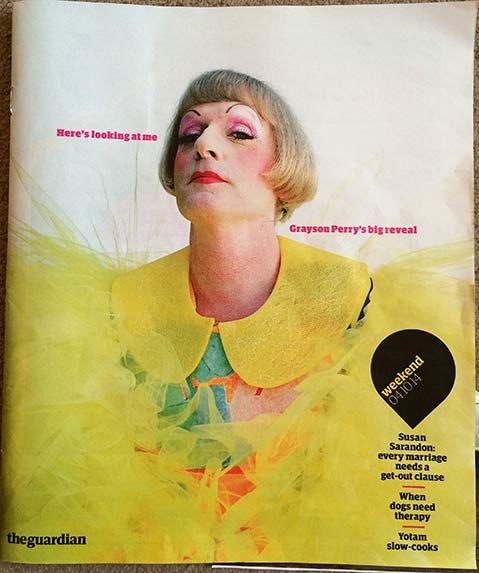
I could probably go off on at least ten essays responding to things he said - I can really relate to a lot of that stuff, and Perry says it very articulately - but one thing was relevant to this blog post, his attitude toward 'likenesses'. 
I don't think Perry's being a snob, he just knows his art is more than making drawings that look like photos, or resemble a real-life subject. Anyone can do that, it's not that different from learning maths or geography, and you can achieve it with study and practice. But it takes a lot of playfulness, research and deliberate exploration to look at something and use it as a jumping-off point for something truly interesting, perhaps something that says something larger about our culture, or even something that just really grabs your eye. That's MUCH harder.
Not to say that learning how to draw realistically isn't a valuable tool! Drawing trees and portraits helps me develop skills that I can put into my more simplified work; it all filters down. But don't underestimate what goes into simplier drawings. To make zinging book illustrations, I need to be fighting fit. And I'm working on it. Taking time to draw this weekend - and write these blog posts - has helped a lot. ...Still fighting back.
Blog: The Giant Pie (Login to Add to MyJacketFlap)
JacketFlap tags: trees, Apropos of Nothing, Luna Station Quarterly, Practical Matters, What's in a Fairy Tale?, giant trees, Add a tag
The second instalment of my fairy tale column has just been posted at Luna Station Quarterly. I hope you’ll enjoy “Under My Bark.”
Blog: The Open Book (Login to Add to MyJacketFlap)
JacketFlap tags: planting trees, lend a hand, poetry Monday, books, poetry, New Releases, trees, Add a tag
A nice poem to start off your week! Today, we’ve chosen a poem from our new fall title, Lend a Hand: Poems About Giving, to share with you:
Trees
I doubt
many people
will pay much attention
to a few scrawny saplings
on this harsh city street.
But if any of these people
are here years from now,
enjoying the shade
in the heat of the summer
or the dazzle of color
on the branches in fall,
maybe they’ll remember
what this street once looked like
and go to a place
in need of some trees,
and plant a few saplings
like I’m doing today.
If you’re interested in planting trees in your area, check out some of these great organizations:
TreePeople (Based in Los Angeles)
Million Trees NYC (Based in New York City)
The Nature Conservancy – Plant a Billion Trees (National)
Filed under: New Releases Tagged: books, lend a hand, planting trees, poetry, poetry Monday, trees
View Next 25 Posts







 Would you say that this is a picture book for older children or can younger ones enjoy it too?
Would you say that this is a picture book for older children or can younger ones enjoy it too?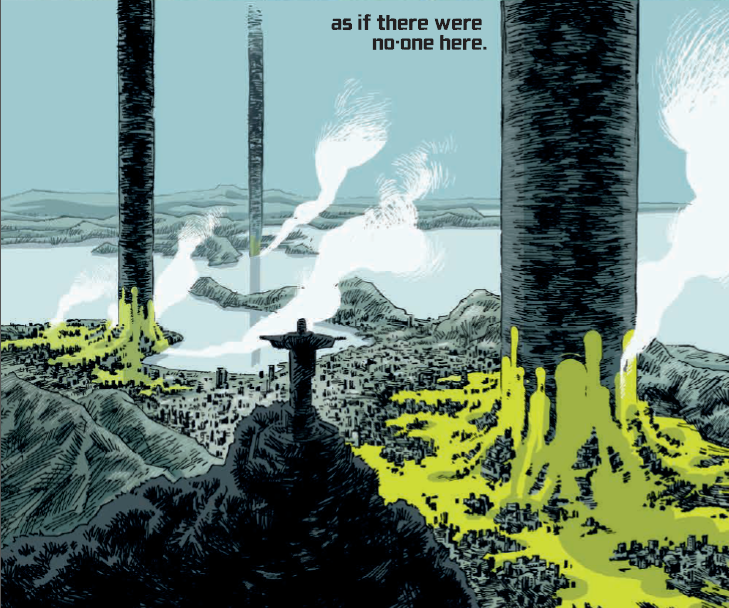
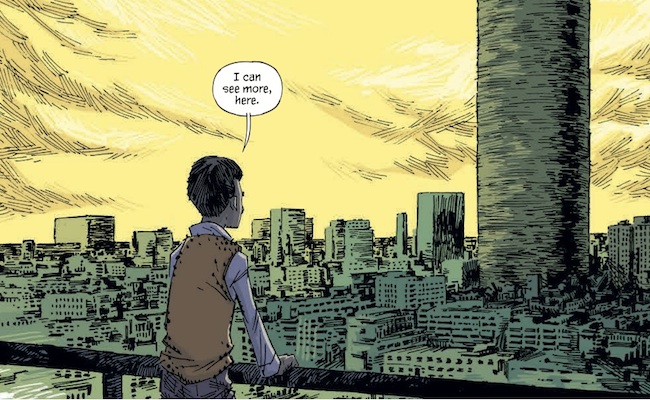
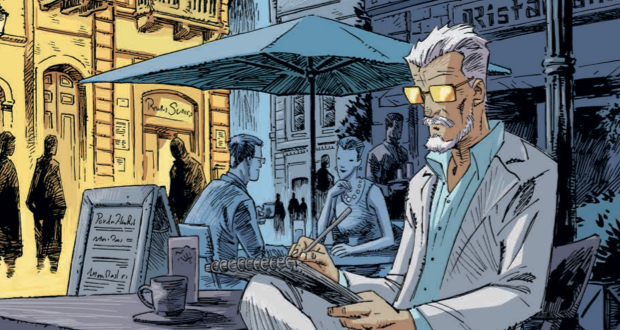
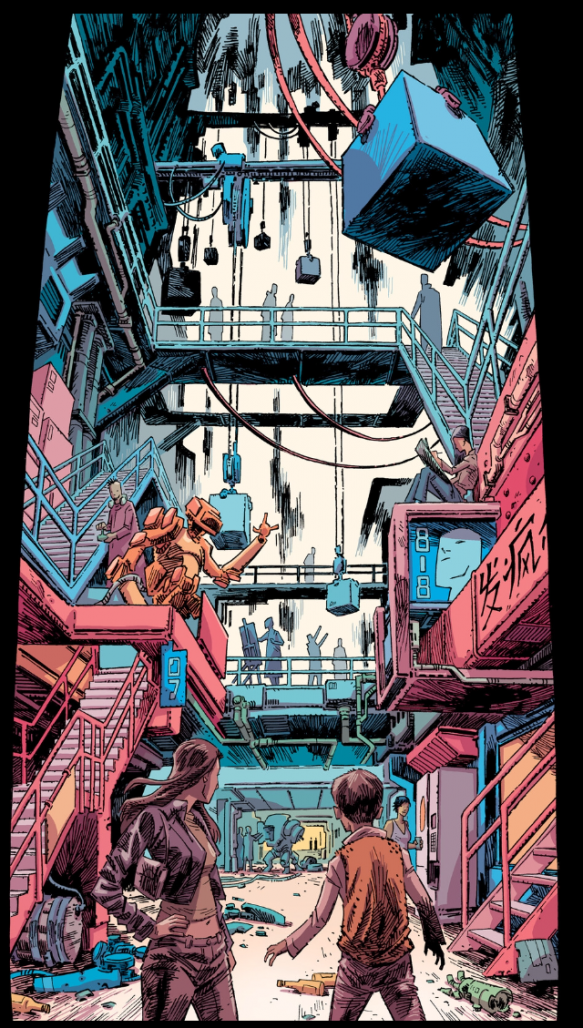
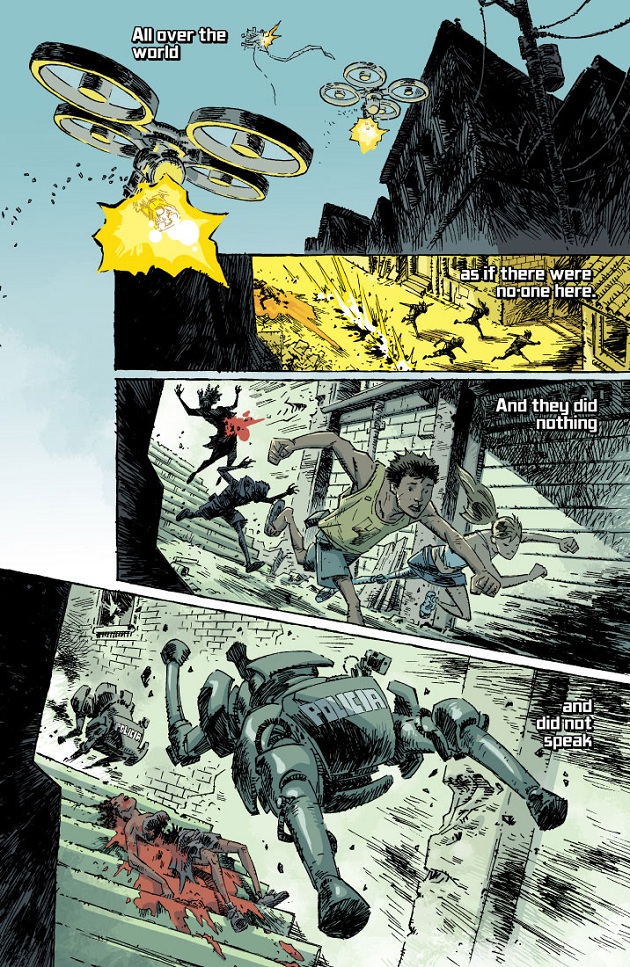
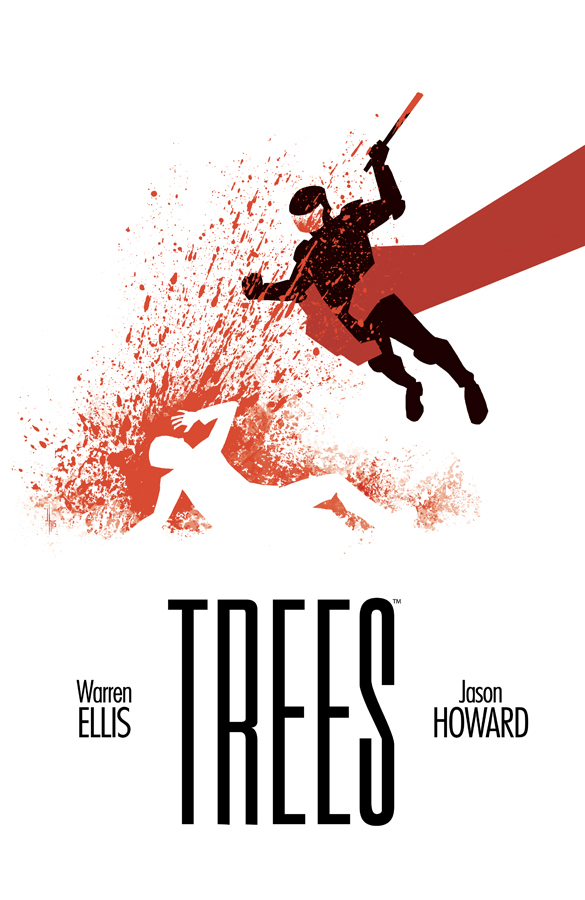







Museums!
LikeLike
Hello, Linda Sarah! I suppose you are both writing and illustrating the two stories – about the pom-pom creature and about the two brothers. I would love to hear the thoughts of the lamp, as well as her memories and dreams!:) I like so much all your characters and ideas – they always lift my spirit up!
Wishing you a wonderful Spring (may the Sun shines as bright for you as it does for us)!:)
LikeLike
Ha! A lot of things going on! I love the two best friends and I like to just sit and look around in Bear’s new shop.
LikeLike